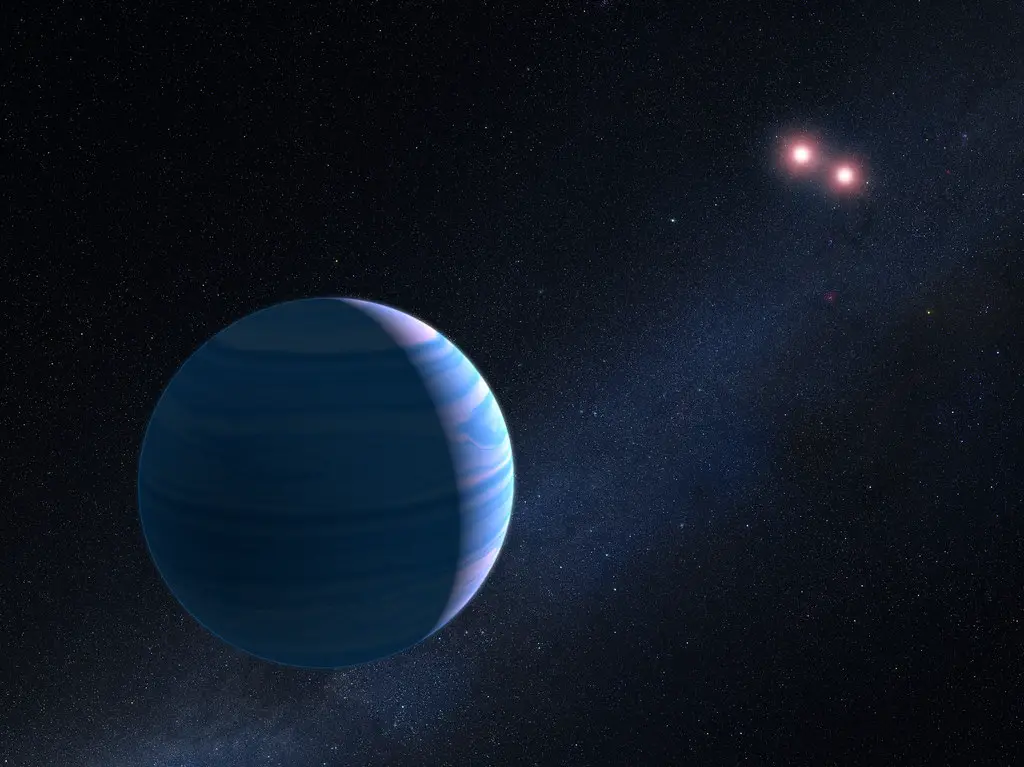We embark on an amazing voyage to Neptune, the eighth and furthest known planet from the Sun, as part of an enthralling expedition to the furthest reaches of our solar system. Among the celestial giants, Neptune is a majestic giant named for the mighty Roman deity of the sea. Like its nearby planet Uranus, Neptune is categorized as a “ice giant,” consisting of a heated, thick fluid mixed with components that are “icy.” Thick atmospheres of hydrogen, helium, and methane surround this fascinating globe, weaving an enthralling tapestry of colors and atmospheric phenomena that never fails to fascinate scientists and space fans alike. Explore even farther into our cosmic neighborhood to witness the mysterious charm of Neptune, a celestial wonder that begs us to unravel its secrets.
The Mean Distance
Neptune’s intriguing elliptical orbit has made it well-known as the eighth planet from the Sun. Its distinct feature allows its distance from the Sun to fluctuate, resulting in an enthralling cosmic dance. Neptune’s average distance from the Sun is 2.8 billion miles (4.5 billion kilometers). This enormous distance can be understood by comparing it to roughly 30.1 Astronomical Units (AU), where 1 AU is the average distance between the Earth and the Sun. The intricacy of Neptune’s orbit contributes a captivating aspect to its heavenly voyage, rendering it a topic of immense fascination for both space fans and astronomers. Determining the specifics of Neptune’s elliptical orbit piques our interest in the mysteries that lie beyond while revealing the wonders of our large solar system.
The Orbit of Elliptical
The distance between Neptune and the Sun varies based on where it is in its elliptical orbit because of this. The gravitational attraction of other solar system bodies causes this amazing phenomena to happen.
Neptune’s perihelion, or closest point to the Sun, is around 2.77 billion miles (4.46 billion km) from Earth. At this point, Neptune is subject to the strongest gravitational pull from the Sun, which causes its orbital speed to significantly increase.
On the other hand, Neptune is roughly 2.82 billion miles (4.54 billion kilometers) distant from the Sun at its furthest point, or aphelion. During this phase, Neptune experiences a modest drop in orbital speed due to influences from other gravitational forces in the solar system.
These changes in distance and speed give Neptune’s orbit a fascinating dynamic that astronomers and space fans can’t help but find fascinating to examine.
The Extended Orbital Duration
One remarkable feature of Neptune, the planet that lies furthest from the Sun in our solar system, is that it has the longest orbital period of any planet that is currently known. Neptune’s typical distance from the Sun is around 2.7 billion miles, meaning that it takes an incredible 165 Earth years for it to complete one circle around the Sun. Because of its great distance from Earth, Neptune only receives 1/900th of the sunlight that Earth receives.
Neptune has barely completed one complete orbit since its discovery in 1846, highlighting the vastness of its space travel. This puts things into perspective. This astounding information demonstrates the vastness and wonder of our stellar neighborhood as well as the extraordinary perseverance needed to research and comprehend the farthest regions of our Solar System. It serves as a reminder of how much more there is to discover and understand about the world outside of our own.
The azure giant
Neptune is still a very fascinating planet even if it is far from the Sun. Its enormous size, ranking third in mass and fourth in circumference among all planets, contributes to its breathtaking beauty. Furthermore, the fascinating phenomena of methane in Neptune’s atmosphere absorbing red light and reflecting back blue light into the great expanse of space is responsible for the planet’s captivating deep blue tint. This distinctive color interaction produces an enthralling visual show that heightens the mystery and appeal of this mysterious celestial body. Neptune is a fascinating planet that never fails to captivate astronomers and space fans with its enigmatic and alluring qualities.
In summary
Because of its separation from the Sun, Neptune provides a special viewpoint on the size of our solar system. Reaching Neptune from the Sun would take roughly 4 hours, even traveling at the speed of light. Planets like Neptune serve as a constant reminder of the vastness of space and the unsolved wonder that lies beyond our own celestial neighborhood as we continue to explore the cosmos.
Sources
![]()
